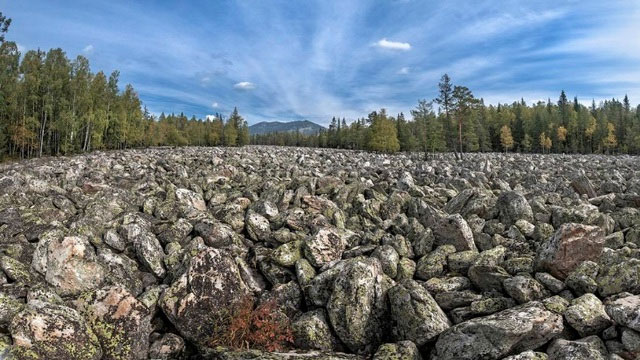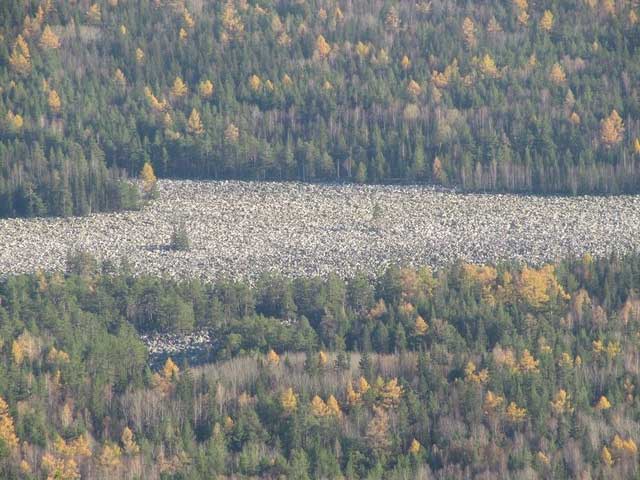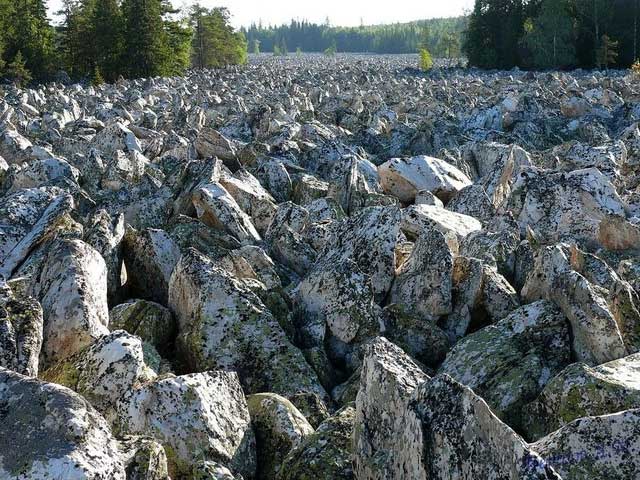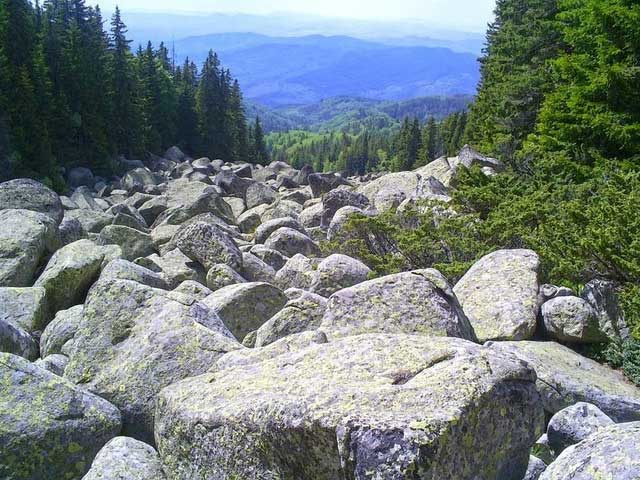For thousands of years, despite the river’s name, there has been no flow and no water below.
Located in Chelyabinsk Oblast, Russia, it is called a river but in fact Big Stone has no flow and no water. This stone river is a convergence of millions of large and small rocks, with an average width of about 200m, stretching about 6km. This is one of the attractive destinations when visitors come to Taganai park in the southern Ural Mountains in Russia.

The river has been without water for thousands of years.
It is known that the stone river was formed during the ice age about 10,000 years ago. That was when the glaciers covering the top of the Taganai mountain range reached heights of up to 4,800m. Under the weight of the ice, the mountain top was crushed into millions of large rocks.

The river “flows” through a dense pine forest.
When the ice melted, the rocks slowly slid down to form the current rock river. Due to its geological characteristics, it is called “river”. Even though there is no water, Big Stone “flows” through a dense pine forest so it looks like a real stream. And millions of stones in the river still maintain their original positions as they did thousands of years ago.

The stone blocks weigh up to tens of tons, remaining almost in the same position as they were thousands of years ago.
The stone blocks here are large quartz and aventurine (a form of quartz containing mica compounds that give it a sparkling effect), weighing 9-10 tons each. The rock layer is up to 6m deep.
The most interesting thing about coming to Big Stone River is that visitors can hear sounds like flowing water. It was the sound of small streams running under the rocks.

Another rocky river in Vitosha mountain, Bulgaria.
Big Stone is not the only river of rocks in the world. A number of similar stone rivers are also found in other regions of the Ural Mountains.





